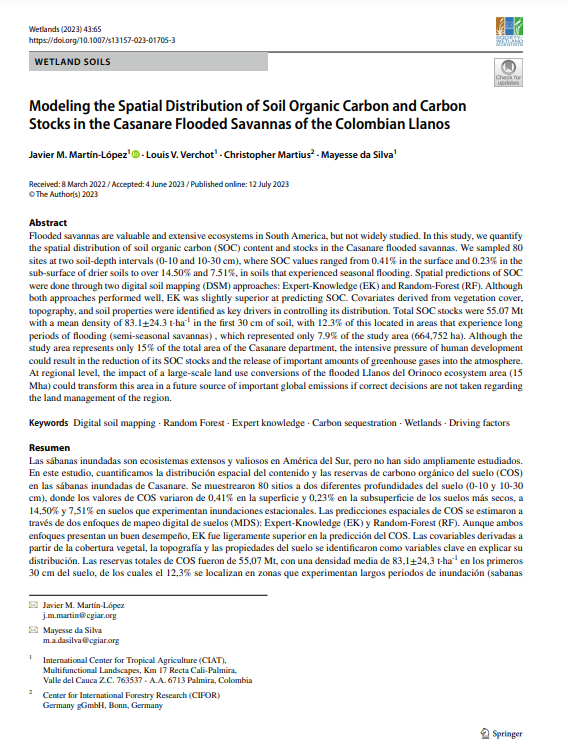Abstract Flooded savannas are valuable and extensive ecosystems in South America, but not widely studied. In this study, we quantify the spatial distribution of soil organic carbon (SOC) content and stocks in the Casanare flooded savannas. We sampled 80 sites at two soil-depth intervals (0-10 and 10-30 cm), where SOC values ranged from 0.41% in the surface and 0.23% in the sub-surface of drier soils to over 14.50% and 7.51%, in soils that experienced seasonal flooding. Spatial predictions of SOC were done through two digital soil mapping (DSM) approaches: Expert-Knowledge (EK) and Random-Forest (RF). Although both approaches performed well, EK was slightly superior at predicting SOC. Covariates derived from vegetation cover, topography, and soil properties were identified as key drivers in controlling its distribution. Total SOC stocks were 55.07 Mt with a mean density of 83.1±24.3 t·ha -1 in the first 30 cm of soil, with 12.3% of this located in areas that experience long periods of flooding (semi-seasonal savannas) , which represented only 7.9% of the study area (664,752 ha). Although the study area represents only 15% of the total area of the Casanare department, the intensive pressure of human development could result in the reduction of its SOC stocks and the release of important amounts of greenhouse gases into the atmosphere. At regional level, the impact of a large-scale land use conversions of the flooded Llanos del Orinoco ecosystem area (15 Mha) could transform this area in a future source of important global emissions if correct decisions are not taken regarding the land management of the region.
Martinlopez, J.M.; Verchot, L.V.; Martius, C.; Dasilva, M.A.

